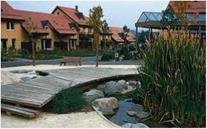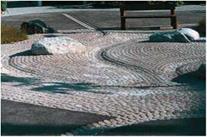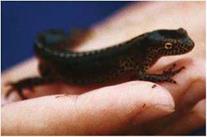|
near Lausanne to commit themselves to an experiment by using a modern rainwater management idea for an estate with ninety dwellings. Since 1986, all the surface water here has flowed along the streets in gutters to a sealed treatment bed. Here the roots of reeds and rushes, in symbiosis with the filter floor, remove the harmful substances from the water before some of it runs into storage tanks. From here water is pumped to the central village well, which is a meeting-place, but also a sculpture, whose impressive volume of flowing water sets currents in motion, whose veil of water reacts to wind, and that is perhaps reminiscent of the fact that the source of all life once sprang from the village fountain. As well as this, a play and adventure area draws its water supply from the tanks. The rest of the rainwater flows into a retention pond, where it evaporates, soaks away or is fed slowly into a stream. The presence of delicate amphibians in the form of alpine salamanders and palmated newts demonstrates the high quality of the water from the reed and rush basins, and also show the importance of artificial water features as second-hand survival biotopes. It was clear from a very early stage in the Hameau de la Fontaine that how the disciplines of art, open-space architecture, leisure research and environmental technology fuse together to form a single theme. |
|
The meandering channel is in the central square in the estate, and shows the history of the course of a river with changing loops. At the end a rhythmically pulsating movement is set up that is reminiscent of organic forms (John Wilkes’ Flowforms). |
|
The centre of the village with a treatment biotope under a platform that is available for performances. |
|
Paved basins show how the rainwater drains away. |
|
Creative people do not always look back on their early work with particular pleasure. We sometimes hear that the artist is pleased to have developed further. This implies an admission that time passes by one’s own work as well, that it is subject to fashion – even when designing open space. But ultimate artists are content to know that every work is a step along a path, without which it would not have been possible to reach one’s current position – and this alone means that every work is valid in its own right. And as well as this it is enjoyable to see the effect of earlier projects on the thinking of a whole profession, and even on related ones. This may well be the case for the Dreiseitl studio and the Hameau de la Fontaine estate project in Echallens. In the early 1980s, surface water drainage, swale infiltration, purification in reed beds, installing underground cisterns and re-using rainwater were all seen as newfangled ideas in urban development that people were a little suspicious of. And so it was all the more courageous of the people of Echallens |
|
Here a second-hand biotope becomes a habitat for creatures under threat, in this case an alpine salamander. |
|
A naturally designed retention pond forms the edge of the estate. |
|
The fountain with its watercourse is a special feature of this estate. |
![]()
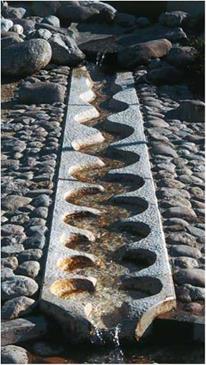
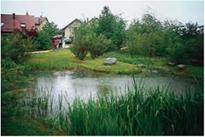
![]()
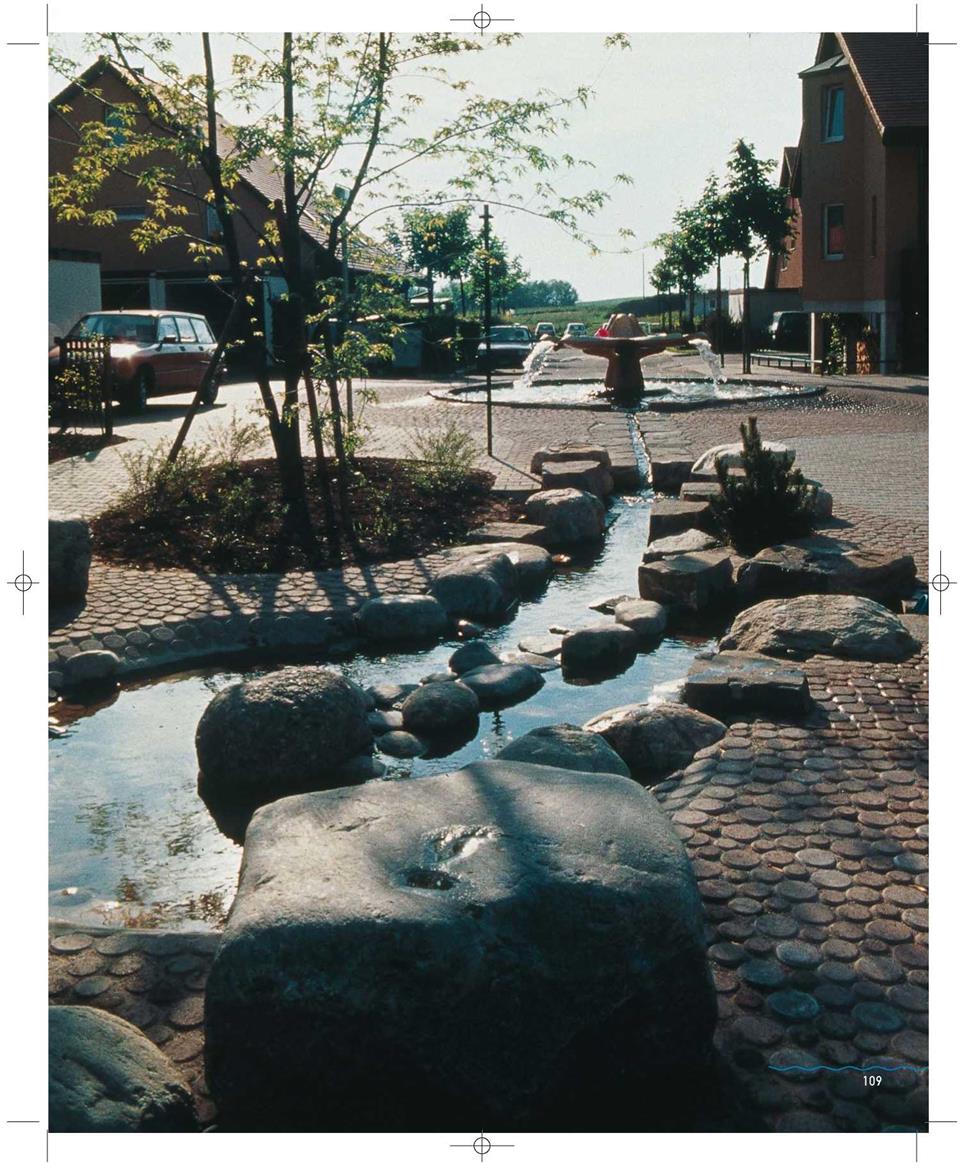 E_03_a_dreiseitl_078-111_16 19.09.2005 11:47 Uhr Seite 109
E_03_a_dreiseitl_078-111_16 19.09.2005 11:47 Uhr Seite 109

